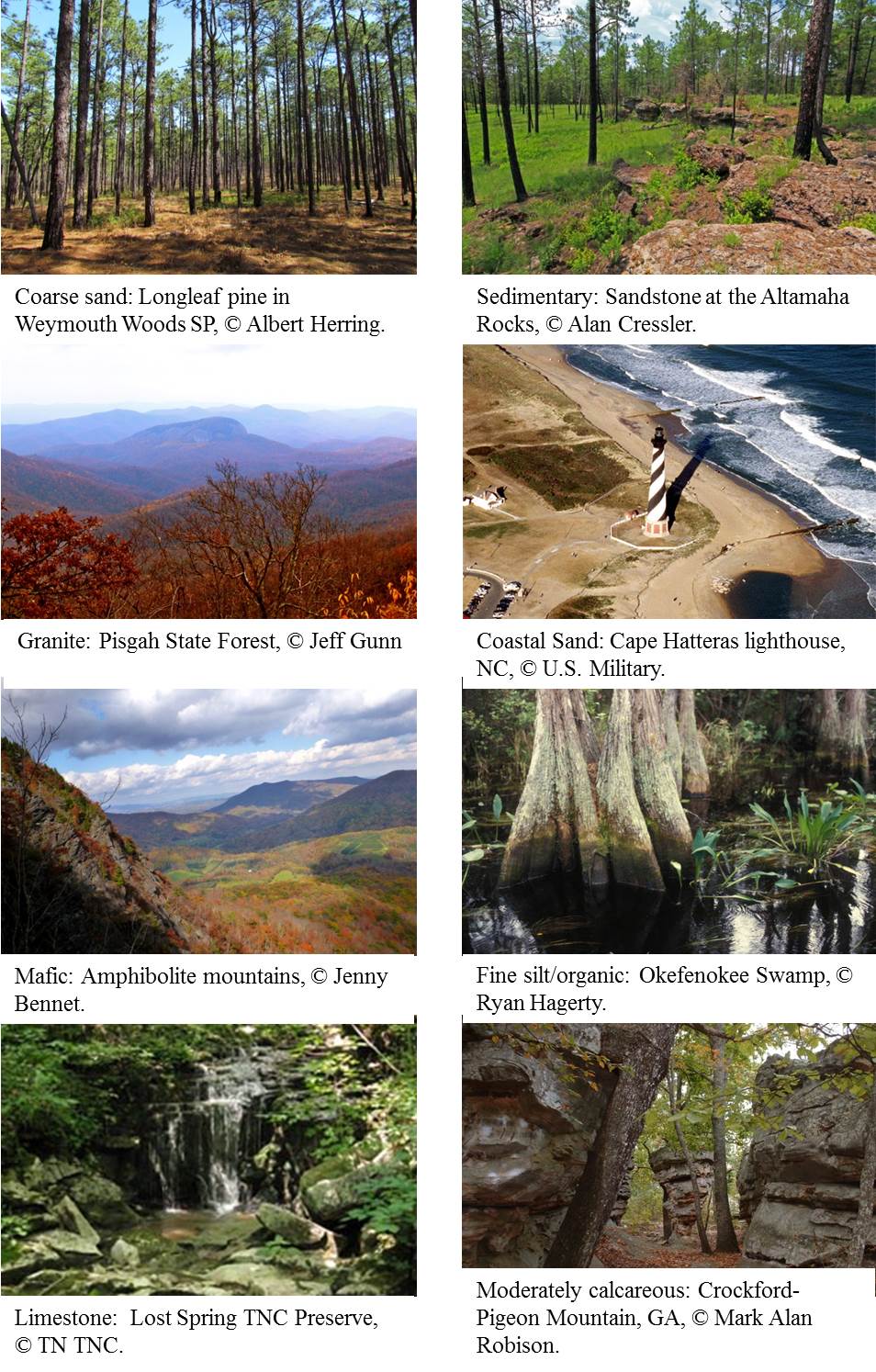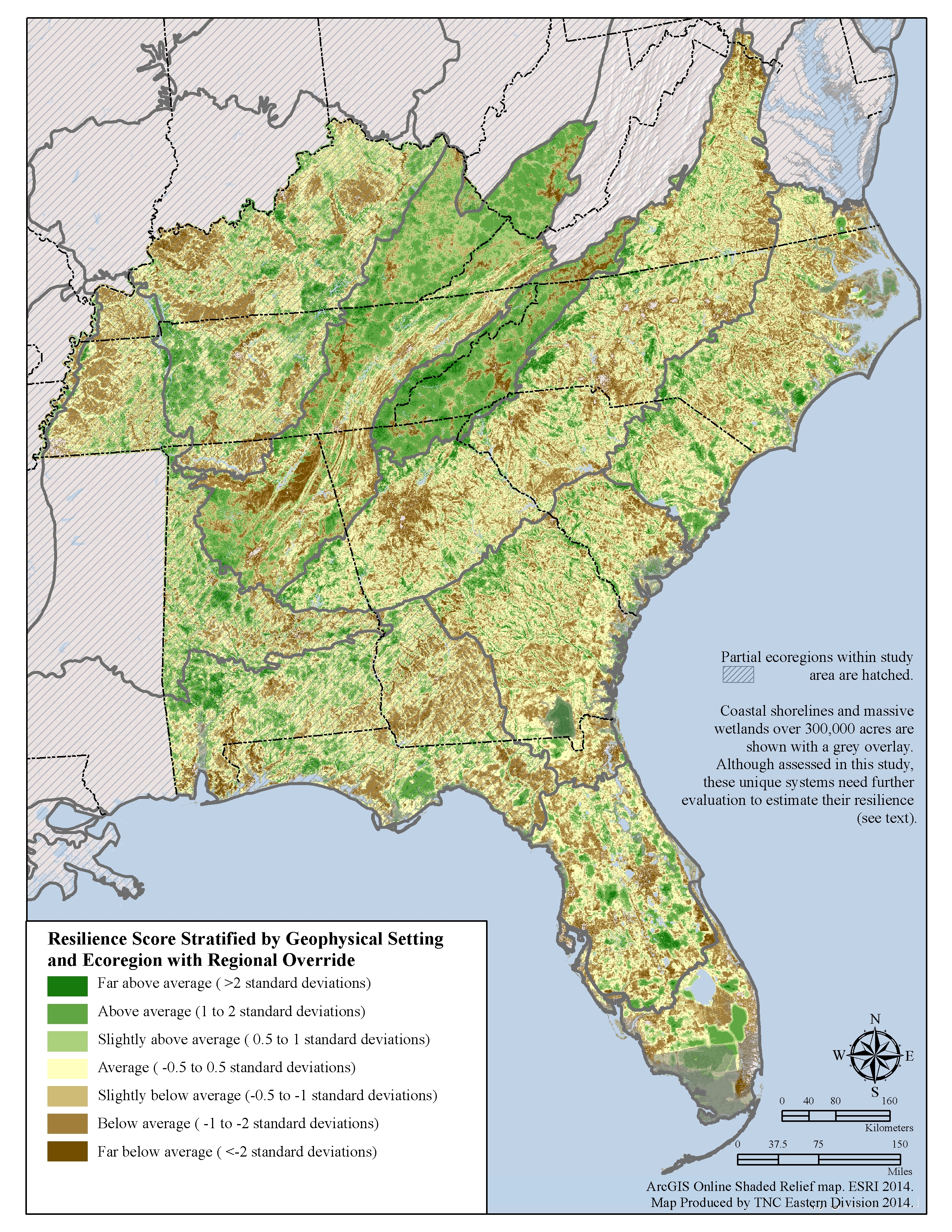The Nature Conservancy’s Southeast Resilience Project aimed to identify key areas for conservation based on land characteristics that increase diversity and resilience. The project was guided by a steering committee made up of over 25 internal and external scientists. This committee customized the methodology for the Southeast landscape and helped to evaluate the results. Funding was provided by the Doris Duke Charitable Foundation and The Nature Conservancy.
As in the Northeast Resilience Project, sites were compared with other sites of the same geology, elevation range, and ecoregion. These are known as settings.

We prioritized among examples of the same setting using two categories of physical characteristics that increase resilience. The first, landscape diversity, refers to the number of microhabitats and climatic gradients available within a given area. Landscape diversity is measured by counting the variety of landforms, the elevation range, and the wetland density. Because topographic diversity buffers against climatic effects, the persistence of most species within a given area increases in landscapes with a wide variety of microclimates. Local connectedness, the second factor, is defined as the number of barriers and the degree of fragmentation within a landscape. A highly permeable landscape promotes resilience by facilitating range shifts and the reorganization of communities.
The map shows areas in the southeast predicted to be more resilient to climate change (green), or more vulnerable to climate change (brown), with respect their type of physical environment. Coastal areas (in gray) need further assessment due to sea level rise. Click map to enlarge.

The study area includes the seven states of NC, SC, GA, FL, AL, TN, and KY in their entirety as well as large portions of VA and WV, and a tiny portion of MD. This report is a counterpart to Resilient Sites for Terrestrial Conservation in the Northeast and Mid-Atlantic.
